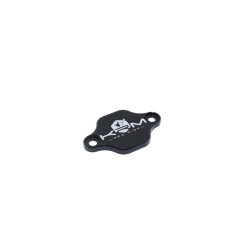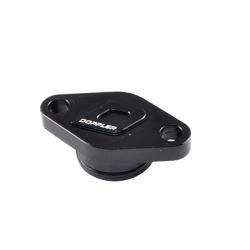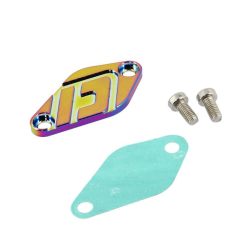The best scooter shop in 2025
Oil Pump Cover
Oliepomp Afdekplug Honda MT / MB
Oliepomp Afdekplaat Doppler V2 Zwart Derbi / AM6
Oliepomp Afdekplaat Doppler V2 Rood Derbi / AM6
Oliepomp Afdekplaat Doppler V2 Blauw Derbi / AM6
Afdekplaat Oliepomp Doppler Min. Hor / Vert Zwart
Oil Pump Cover Plate Doppler V2 Titanium Derbi / AM6
Oliepomp Afdekplaat Doppler V2 Alu Derbi / AM6
Oil Cover Plate: Protecting and Maintaining your Engine
The oil cover plate is an essential part of many vehicles, with the aim of providing protection against dirt and damage, and helping to maintain the engine oil. But how do you apply oil correctly and what exactly are cover plates? In this article, we explain how to use these components effectively and why they are important for the lifespan of your vehicle.
How to apply oil?
Applying engine oil correctly is essential for the performance and lifespan of your engine. Engine oil lubricates the moving parts of the engine and reduces friction, preventing excessive wear. Here are the steps for applying engine oil:
-
Check the oil dipstick: Before adding oil, it is important to check the oil dipstick to see if the oil level is actually low. Pull out the dipstick, wipe it clean, put it back in, and pull it out again to check the level. The dipstick usually has an indicator that tells you if you need to top up the oil.
-
Choose the right oil: Make sure you use the right oil that is suitable for your vehicle. This is usually stated in the instruction manual of your vehicle. The viscosity (thickness) and the type of oil (synthetic, semi-synthetic or mineral oil) are important factors to consider.
-
Top up the oil: If the oil level is low, unscrew the oil cap on the engine and pour the recommended amount of oil into the engine. Do this slowly and with the help of a funnel to prevent spills. Regularly check the oil level to see if you have added the right amount.
-
Run the engine: After you have applied the oil, let the engine run for a few minutes to allow the oil to circulate through the system. Then, check the oil level again and top up if necessary.
-
Tightly close the oil cap: Close the oil cap securely to prevent oil from escaping or dirt from getting into the engine.
Regularly changing the oil and checking the oil level is important to prevent the engine from overheating or seizing, which can cause serious damage.
What are cover plates?
Cover plates are protective panels that are placed under the engine or other vital parts of your vehicle. Their main function is to protect sensitive components, such as the engine, transmission or oil pan, from dirt, water, stone chips and other external influences. They also contribute to a more efficient airflow and aerodynamics under the vehicle.
Cover plates are available in different materials, such as plastic, steel or aluminum, and are specifically designed to withstand harsh conditions. Here are the main benefits of cover plates:
-
Protection against dirt and damage: The cover plate prevents dirt, mud, stones and other debris from damaging the underside of the engine or the oil pan. This is especially important if you often drive on unpaved roads or in wet conditions.
-
Extension of the life of components: By protecting the engine and other vital parts from damage, cover plates help extend the life of your vehicle. Less exposure to dirt and damage means less wear and tear and less chance of expensive repairs.
-
Maintenance of engine oil: Cover plates also help protect the oil pan, preventing leaks or damage to the oil pan. This keeps the engine oil at a good level and the engine functioning as intended.
-
Aerodynamics: Cover plates provide better airflow under the vehicle, which can contribute to lower fuel consumption and better driving performance.

 Nederlands
Nederlands






